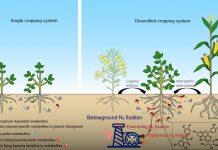Tang HY Liu G Han Y et al.. A system for free-air ozone concentration elevation with rice and wheat: Control performance and ozone exposure regime. Atmospheric Environment 2011 45(35): 6276-6282. (IF 3.226 环境科学,二区Top)
Abstract
A system for free-air concentration enrichment with ozone (FACE-O3) was installed in a field in Jiangsu Province of China to grow wheat and rice plants in either ambient [O3] (A-O3) or elevated [O3] (E-O3) without any enclosures. Ozone generated from pure O2 and mixed with compressed air was released into the E-O3 plots from a 14 m diameter octagon. The gas release was controlled for each E-O3 plot with an algorithm based on wind direction wind speed and [O3] at the center of the plot. With 1-min mean [O3] the achieved elevation was within ±20% of the target which is 50% above A-O3 for 94% of time and within ±10% of the target for 73% of time on average across 4 years from 2007 to 2010. Ozone fumigation ran on daytime but was withheld when ambient [O3] was below 20 ppb or leaves were wet. The discontinuity in O3 release resulted in the daily mean 7 h [O3] (M7 900–1600 h Chinese Standard Time) in E-O3 by only 24% higher than that in A-O3. The average effective increase in AOT40 (accumulated [O3] above the threshold of 40 ppb) was 115%. Ozone exposure regime in E-O3 as characterized by M7 and AOT40 was compared with that in a scaled-up [O3] (S-O3) which was obtained by scaling A-O3 by 1.24: the ratio of M7 in E-O3 to that in A-O3. For the same M7 E-O3 had higher AOT40 than S-O3 because E-O3 had more high [O3] peaks than S-O3. The shift in AOT40 is only modest however and the [O3] regime in E-O3 was consistent with that in open-top chamber experiments in the past. This FACE-O3 system can thus maintain elevated [O3] in open field with modest alteration to [O3] regime to an extent comparable to open-top chambers.







